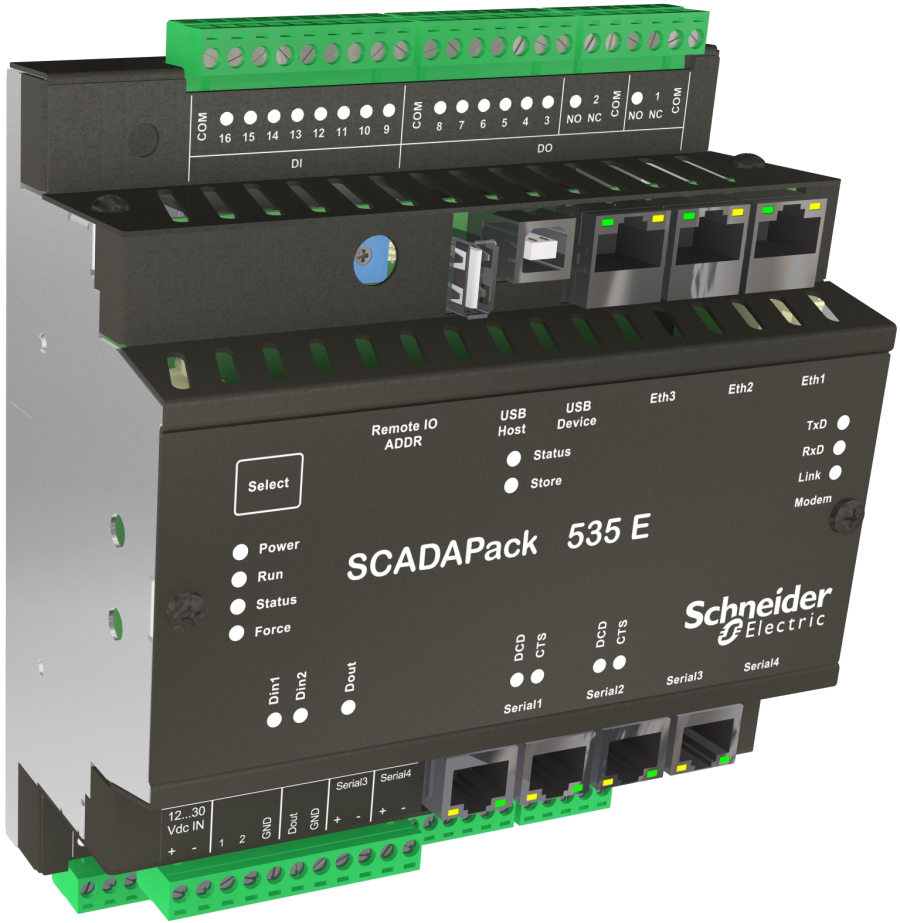Share Your Feedback – Help Us Improve Search on Community! Please take a few minutes to participate in our Search Feedback Survey. Your insights will help us deliver the results you need faster and more accurately. Click here to take the survey
What is SCADA and how does it work?
Remote Operations Blog
Read announcements related to Remote Operations (formerly SCADA & Telemetry). New products, new versions, case studies, videos and other relevant news will be posted in this blog. Keep up-to-date with the challenges that remote sites present and how to ensure reliable communications, monitoring & management to enhance productivity and profitability.
Search in
Improve your search experience:
- Exact phrase → Use quotes " " (e.g., "error 404")
- Wildcard → Use * for partial words (e.g., build*, *tion)
- AND / OR → Combine keywords (e.g., login AND error, login OR sign‑in)
- Keep it short → Use 2–3 relevant words , not full sentences
- Filters → Narrow results by section (Knowledge Base, Users, Products)
- Mark as New
- Mark as Read
- Bookmark
- Subscribe
- Email to a Friend
- Printer Friendly Page
- Report Inappropriate Content
Link copied. Please paste this link to share this article on your social media post.
What is SCADA and how does it work?
Originally published on Remote Operations Blog by Sandro.Estaba | February 10, 2021 12:41 PM
This guide was created as an introduction to SCADA industrial control systems for both engineers and non-engineers. It will allow them to discover what SCADA is, how it functions, how it can be implemented within a manufacturing process or utilities’ operations, and what advantages it provides over other industrial engineering communication protocols.
What is SCADA?
SCADA, short for Supervisory Control and Data Acquisition, is an industrial control system designed to monitor factory and plant operations either on-site or from a remote location.
A SCADA system is made up of both hardware devices and SCADA software that allow a user to control and monitor operations. A SCADA system can collect, monitor, and analyze data coming from a plant or factory in real-time, allowing workers to monitor and control operations with greater visibility.
With a SCADA system in place, human operators can control valves, pumps, motors, sensors, and any other instrument within a process using an automated system that saves time. Output and data can be tracked and recorded using these systems, giving manufacturers insight into plant efficiency and see how industrial operations can be improved.
The result is greater process control, improved monitoring, and access to more data that allows continuous improvements to be implemented.
How does a SCADA system work?
The most basic SCADA system is a graphical user interface (GUI) connected to a programmable logic controller (PLC) within a manufacturing plant or an automated factory. Most SCADA architectures consist of server computers which communicate with devices and a GUI connected to the server. The servers and the GUI can be located either on-site or remotely depending on the nature of the plant being monitored and controlled.
The SCADA device network is made up of RTUs (Remote Terminal Units) and PLCs. Both RTUs and PLCs use microprocessors to interact and communicate with field devices. Field devices can include pumps, valves, motors, and any human-machine interface.
The microprocessors from the RTUs and PLCs collect data from the field devices and transfer it to the SCADA server software where it is recorded and analyzed, then displayed by the GUI.
Before SCADA, a processing plant or factory would require more employees on-site to operate and supervise the industrial equipment. If ever a piece of equipment was at risk of overheating or malfunctioning, personnel would manually adjust the output using selector switches after reading analog data through a series of dials. They would also oversee the shutting down of equipment and resetting of instruments.
With a SCADA system, the need for on-site personnel is greatly reduced, and the personnel who are working on-site can focus on the most important tasks. Data can be collected and gathered from across the globe, allowing operators to make more informed decisions and optimize output. Costly production slowdowns can also be averted with predictive analytics and preventative maintenance.
What are the benefits of having SCADA systems in a plant or factory?
SCADA has been around for close to 50 years and has constantly evolved to changes in automation technology. These days, it is often referred to as the Industrial Internet of Things (IIoT).
Since the beginning, SCADA systems allowed processing plants and factories to staff their worksites more intelligently. With centralized control, fewer workers are required to operate each part of the manufacturing process. In some cases, operators don’t even need to be on-site and can work remotely while overseeing operations in several different locations across the world. This is especially helpful when dealing with global supply chains.
An even greater advantage that comes from implementing SCADA systems is the ability to process, record, and analyze data from field devices. With advances in IoT technology, virtually any step within the manufacturing process can be tracked and measured using IoT sensors. This allows plant managers and industrial engineers to pinpoint exactly where efficiency improvements can be made within a conveyor manufacturing system. These continuous improvements can add up and result in exponential savings or output increases over time.
Finally, SCADA also allows a manufacturer to create an intuitive automated control system using the tools and systems they deem best for their communications network without having to worry about compatibility issues. Due to many SCADA systems having an open-communication architecture, the ability to connect devices and sensors is not limited by brand specifications. This lets an organization make equipment decisions based on either price or performance-related criteria.
Want to learn more about SCADA systems?
Subscribe to the Schneider Electric Exchange forums to join a community of experts from around the globe. You’ll find answers to your questions and any issues you may encounter with SCADA systems, along with all the resources you may need.
- Tags:
- english
- field devices
- scada
- SCADA app
- SCADA software
- scada system
- SCADA tutorial
- Telemetry and SCADA
- What is SCADA
Author
Link copied. Please paste this link to share this article on your social media post.
Would you like to add a comment?
All registered members have full access to the Community and can post comments and start topics.
Create your free account or log in to subscribe to the board - and gain access to more than 10,000+ support articles along with insights from experts and peers.


